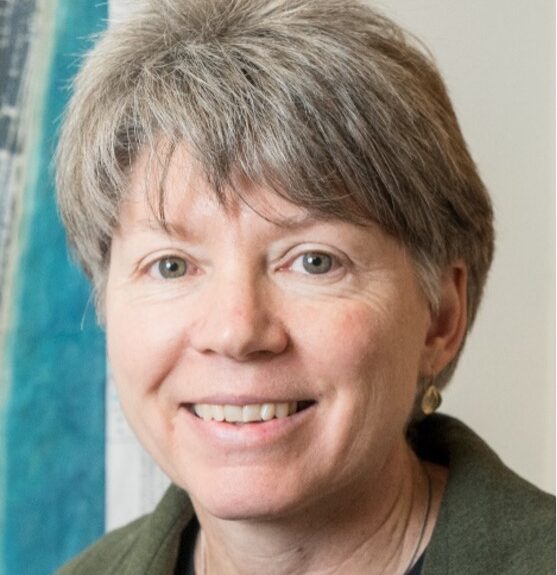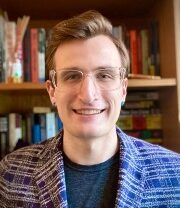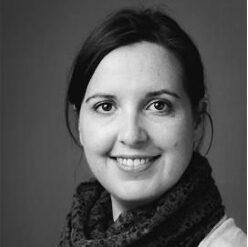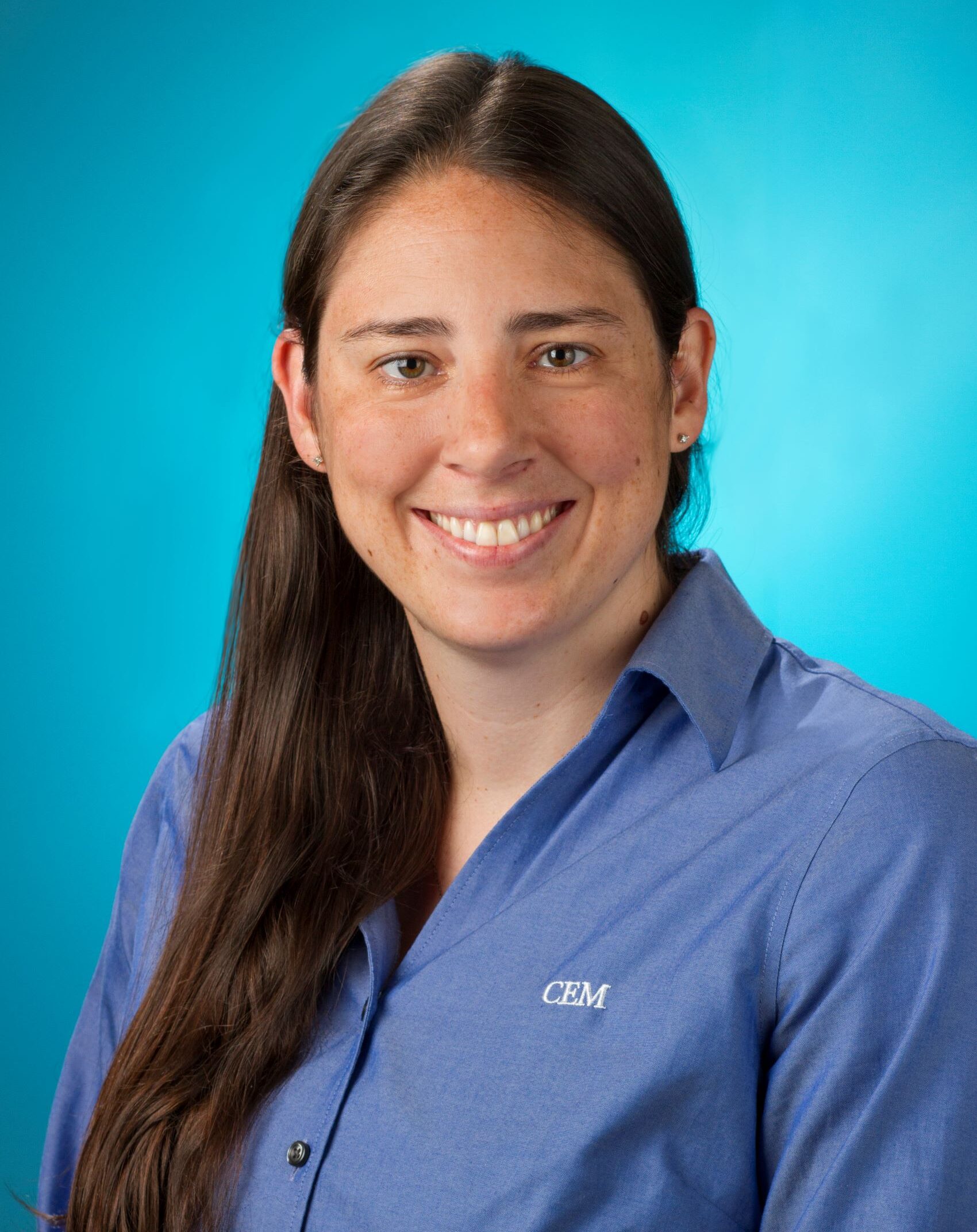

Target and Suspect PFAS in Environmental Samples
Mark Strynar, Office of Research and Development (ORD), US EPA
Targeted analysis methods for chemicals in environmental media are the backbone of monitoring studies. These methods are highly multi-laboratory validated and time-tested approaches for a host of environmental studies. However, there are shortcomings to this approach. The chosen methods only monitor for a select set of analytes. High-resolution mass spectrometry (HRMS) instrumentation (such as quadrupole time of flight and orbital ion trap systems) partially fills this void by allowing the analysis of chemicals without any preconceived notion of what is in the sample being analyzed. This is done through two main approaches: 1) suspect screening—screening for chemicals in a large list, or 2) non-targeted screening—true novel compound discovery and structure elucidation. This approach is not without its own deficiencies as well. The selected extraction techniques and instrument used (such as GC vs LC) bias the possible detected analytes and is not comprehensive. Additional challenges include generally more expensive instrumentation, more laborious data processing and mining techniques, extremely large data sets, and often a lack of chemical standards for compound confirmation and quantitation. An added benefit of HRMS analysis is that data of previously run samples can be mined in future efforts to explore chemicals that were either unknown at the time of analysis or were overlooked. Non-targeted methods should inform analysts about what chemicals should be added to targeted analysis methods, not take the place of them. This talk will present approaches used in the discovery of xenobiotic PFAS chemicals in environmental media using HRMS application.
Target and Suspect PFAS in Environmental Samples
Trever Schwichtenberg, Department of Chemistry, and Jennifer Field, Department of Environmental and Molecular Toxicology, Oregon State University
The field of PFAS forensics is a rapidly growing field, given the interest in attributing PFAS contamination to various sources. Fingerprinting sources is a current focus of activity as part of a Strategic Environmental Restoration and Development Program (SERDP) project. Harmonizing analytical methods for target and suspect PFAS in sources include groundwater, landfill, and biosolids leachate, municipal/power generation/pulp and paper mill effluents is needed along with the development of a quantification strategy for the rapidly expanding universe of suspect PFAS. New tools for quantifying target and suspect PFAS in complex environmental media will be presented along with an approach to estimate limits of detection and quantification for PFAS in samples with high PFAS concentrations. Applications to PFAS forensics will be used as illustrations.
PFAS in Environmental and Human Samples
Leo Yeung, School of Science and Technology, Orebro University, Sweden
Because of regulations limiting or banning the use of some legacy PFAS compounds, the production “new” PFAS has been diversified. However, these newly introduced PFAS are usually not evaluated in current monitoring programs, which might lead to overlooking their existence in the environment and human exposure. Given that naturally occurring organofluorine compounds are rare in nature, organofluorine mass balance analysis may be useful to estimate overall exposure to PFAS. In this presentation, organofluorine mass balance analysis using combustion ion chromatography and targeted liquid chromatography–mass spectrometry (LC–MS) analysis will be demonstrated on a variety of samples ranging from surface water to sewage and human blood. Our results indicated the ubiquitous presence of unidentified organofluorines in all environmental compartments and human samples, for example, more than 50% of extractable organofluorine (EOF) in human samples. Contaminated samples were further analyzed using total oxidizable precursor assay (TOPA) to evaluate how TOPA might help close the organofluorine mass balance analysis. An increase of 1 to 29% of target PFAA to EOF was observed in contaminated soil. To tackle the increasingly complex analytical picture and ensure more comprehensive screening, a workflow using EOF as an initial metric to identify pollution hot spots will be presented.
Paul Massie, Managing Director, Greyhound Chromatography and Allied Chemicals
Greyhound Chromatography works with research scientists and chemists across every discipline in the scientific sector. Greyhound’s extensive range covers all areas of environmental, petrochemical, food, fragrance, forensics, chemical and pharmaceutical analysis, holding stock of many popular products for prompt delivery via their extensive logistics network. Working closely with their customers the Greyhound team have a clear understanding of their needs. Sourcing the right product for complex analysis and solving challenging application issues is at the core of Greyhound’s technical advice service. In depth chromatographic knowledge is at the heart of the company’s technical service team, knowledge that is freely shared and used to assist scientists all over the world with their valuable work. The customer services team work diligently to ensure customer orders are processed promptly and efficiently with a custom sourcing service available to assist clients in locating those difficult to find and obsolete products.
Jay D. Scheffer, M.S., Product Specialist – Ion Chromatography, Metrohm USA
Until now, analysis of targeted polyfluorinated substances (PFAS) has seemed sufficient to assess the environmental impact of this large group of manmade, highly fluorinated substances. With thousands of PFAS compounds now identified, more attention has shifted to non-targeted analysis as it provides a better understanding of the total impact these PFAS compounds have on the environment. Consensus is forming among scientists that analysis of total organic fluorine (TOF) provides a better overall picture of PFAS impact and, as a result, an improved approach to this analysis is needed and non-targeted techniques are of particular interest to the regulatory communities in Europe and the United States. This session will present how the new ProfilerF Total Fluorine Analyzer enables the determination of these critical fluorine compounds in wastewater and industrial process water samples.
Andrew Harron, Application Scientist, Advanced Materials Technology
Per- and polyfluoroalkyl substances (PFAS) are chemicals that have been known to have a deleterious environmental impact and are suspected carcinogens. Due to the hydrophobic nature of the fluorocarbon section, these are highly stable compounds, however they are also highly reactive with polar molecules, due to the hydrophilic nature of the carboxylate section, allowing them to dissolve readily in water and remain largely intact. PFAS from fluoropolymers and coatings are ubiquitous in most plastics, and often leach out during analysis, therefore unbiased PFAS analysis can be challenging. This talk will focus on the HALO® PFAS solution to PFAS analysis, including environmental and food safety applications, with a focus on analyzing the leaching of PFAS into bottled water.
Caroline Widdowson, PhD, MBA, MRSC, Head of Market Development, Markes International
The measurement of volatile PFAS in air (indoor, ambient, and industrial) is a rapidly increasing field of interest, due to both human health and environmental concerns. Analytical techniques typically used for water and soil samples such as LC–MS are not applicable to the short chain, volatile compounds. Advanced thermal desorption (TD) GC–MS systems were designed specifically for monitoring trace-level organic vapours and recent developments in automated TD technology have meant these methods can be applied to more and more challenging compounds including volatile PFAS compounds.
Dr. Alicia Stell, PhD, Lead R&D Scientist, CEM Corporation
Remediation of PFAS is largely not possible so accurate analysis of PFAS is critical to public safety. In the laboratory, PFAS analysis is difficult because PFAS-free componentry is essential for accurate analysis. Everything—from sample- homogenizing equipment to extraction systems to liquid chromatography systems—needs to be PFAS-free. In this webcast we will discuss homogenization and extraction protocols for a variety of matrices to optimize recovery. We will also discuss LC methods and results of these studies.

Physical Scientist, Office of Research and Development (ORD), US EPA
Mark Strynar is a physical scientist in the Office of Research and Development of the U.S. Environmental Protection Agency (US EPA), a role he has held since 2002. His research interests include the use of high-resolution mass spectrometry (HRMS) to investigate the fate and transport of per and poly fluorinated compounds (PFAS) and other xenobiotic compounds in biological and environmental media. Additionally, he is interested in novel compound discovery in environmental media and development of analytical methods for unique biomarkers of exposure to chemicals that are useful for dosed animal or human epidemiological studies.

Professor, Department of Environmental and Molecular Toxicology, Oregon State University
Jennifer Field has developed analytical methods for PFAS for 20+ years with a focus on natural and engineered systems. She is an Executive Editor for Environmental Science & Technology.

Department of Chemistry, Oregon State University
Trever Schwichtenberg has expertise on PFAS in the environment using high-resolution mass spectrometry (HRMS). His focus in on studying PFAS behavior at environmental air-water interfaces (such as foam and surface microlayer), developing forensic tools for PFAS contamination, and applying machine-learning tools to HRMS data. He will start a postdoctoral position with Dr. Paul Tratnyek at Oregon Health Sciences University this spring.

Associate Professor, School of Science and Technology, Orebro University, Sweden
Leo Yeung is an associate professor (docent) at the MTM Research Centre in the School of Science and Technology at Örebro University in Sweden. Leo joined the MTM Research Centre as a senior lecturer in 2016 and became an associate professor in 2018. He obtained BSc (Environmental Life Science, 2003) at the University of Hong Kong, an MPhil (Environmental Science, 2006), and a PhD (Environmental Chemistry,2009) at City University of Hong Kong. He served as a post-doctoral researcher at City University of Hong Kong, at the National Institute of Advanced Industrial Science and Technology (Japan), and at the University of Toronto (Canada, 2010–2014). After that, he worked as a senior research associate at University of Toronto. His current research interests are to develop analytical method on measurement of PFAS including replacement products; to apply the organofluorine mass balance approach to understand current PFAS contamination in the environment using combustion ion chromatography; to identify and measure newly identified PFASs in environmental samples using LC–TOF-MS and LC–MS/MS spectrometry techniques; and to study the fate and transport of unidentified PFAS in the environment.

Managing Director, Greyhound Chromatography and Allied Chemicals
Paul Massie, Managing Director, founded Greyhound Chromatography in 1981 with the aim of being the single source, technical and reliable supplier of reference standards and chromatography consumables. The company quickly grew into a thriving business with a global reach and is now one of today’s leading chromatography supply companies. Greyhound has enjoyed close, long-term relationships with many of its suppliers with the product range continuing to increase as new products and suppliers are added to the company’s portfolio.
Paul is passionate about chromatography, developing the company’s first website in 1995 which has grown considerably over the years. Today’s extensive website provides access to over a million products, all related to the chromatography and analytical sector.

Product Specialist – Ion Chromatography, Metrohm USA
After graduating with a BS in chemistry from Elon University, Jay attended graduate school at Emory University. There, he studied analytical chemistry with a research focus on MALDI-TOF mass spectrometry and received a master’s degree. Following school, Jay served for over 11 years as Senior Chemist for Constellation Technology Corp. in Largo, FL, with experience in GC-MS, ICP-MS, AA, HPLC, laser-ablation spectroscopy, and microscopy and managing multiple long-term research projects for the Department of Defense. In 2012, Jay joined Metrohm USA as an applications specialist with focus on ion chromatography and Combustion IC. He also serves on multiple committees with ASTM and is active in developing new analytical test methods for the petroleum and chemical markets.

Application Scientist, Advanced Materials Technology
Dr. Andrew Harron is an applications research scientist at Advanced Materials Technology where his focus is in LCMS applications. Prior to joining AMT, Andrew was with Thermo Fisher Scientific as an application scientist focusing in HRAM and triple quad application and development. Andrew also worked for the US Department of Agriculture (USDA) as a research chemist in Sustainable Coproducts and Biofuel division (SCBP), with a focus on LCMS application development for coproducts that are produced during the biofuel process. Dr. Harron received his PhD in Chemistry, with a focus in analytical and mass spectrometry under Dr. Charles N. McEwen at the University of the Sciences, developing and adapting new methods of ionization to both large and small molecule applications. In addition, he served as a faculty member in the Department of Chemistry at the University of the Sciences, and as an adjunct professor at Villanova University. He is a member of the American Society of Mass Spectrometry (ASMS), American Chemical Society (ACS), American Oil Chemists Society (AOCS), and active in the Delaware Valley Mass Spec discussion group.

Head of Market Development, Markes International
Caroline Widdowson is a specialist in the sampling and analysis of trace-level volatile and semi-volatile organic compounds in solids, liquids, and gases. She holds a PhD in Organic Chemistry and a MBA. Caroline is the Head of Market Development at Markes International.

Lead R&D Scientist, CEM Corporation
Dr. Alicia Douglas Stell has worked with CEM for the past 14 years, having joined after completing her PhD in Analytical Chemistry. Her extensive background in chromatographic analysis and her mechanical expertise have been instrumental in the development of the EDGE solvent extraction system and its applications. She has been leading the EDGE product since its inception and traveled the world to identify new markets develop applications for this innovative technology.